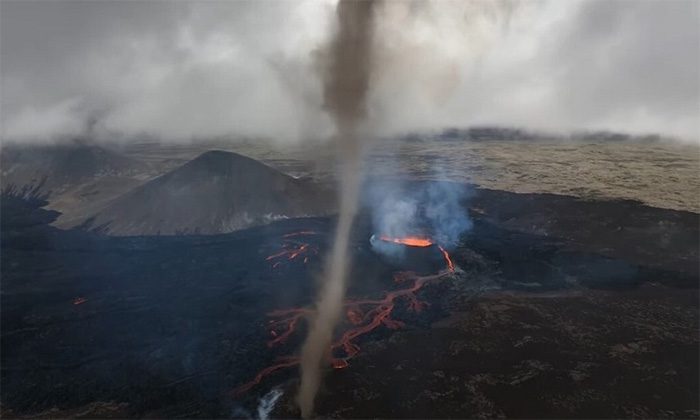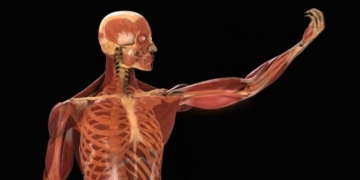The swirling tornado above the newly formed Litli-Hrútur volcano is the result of meteorological and geological factors.
According to a report from the Icelandic Meteorological Agency on July 27, loud rumblings from the eruption area on the Reykjanes Peninsula indicate that pockets of methane gas trapped in the lava flow are exploding. This is the youngest volcano on Earth, creating a swirling tornado that reaches high into the sky.
The swirling tornado at the mouth of the Litli-Hrútur volcano. (Video: Martin Sanchez)
The Litli-Hrútur volcano emerged from a fissure in the ground on July 10 and has continuously erupted rivers of lava since then. As the lava flows through vegetated areas, methane gas is produced when the plants do not burn completely. The gas then accumulates in hollow pockets within the lava. Methane pockets mixed with oxygen form a flammable gas mixture. Explosions occur when sparks ignite these gas pockets. Authorities warn that this poses a danger to anyone who gets too close to the lava flow.
The tornado forming above Litli-Hrútur is due to a combination of meteorological and geological factors. The immense heat from the molten rock erupting from the crater heats the air just above it, causing the air to become less dense and rise. In suitable wind conditions, this column of hot air rotates, creating a tornado. According to David Smart, a tornado and storm researcher at the Hazard Center of the University of London, it is still unclear whether the tornado forms from superheated volcanic debris hovering above the vent or from the heat of the lava flow.

The tornado formed due to a combination of meteorological and geological factors.
“This type of tornado can sometimes be encountered in areas with strong heat sources on the ground and unstable air at heights below one kilometer or very close to the ground,” Smart explains. The air is considered unstable when the temperature decreases rapidly with altitude.
The young volcano shows no signs of decreasing activity. Researchers have recently observed changes in the eruption activity causing the crater to collapse, leading lava to spill north and west while the flow to the south has slowed.




















































